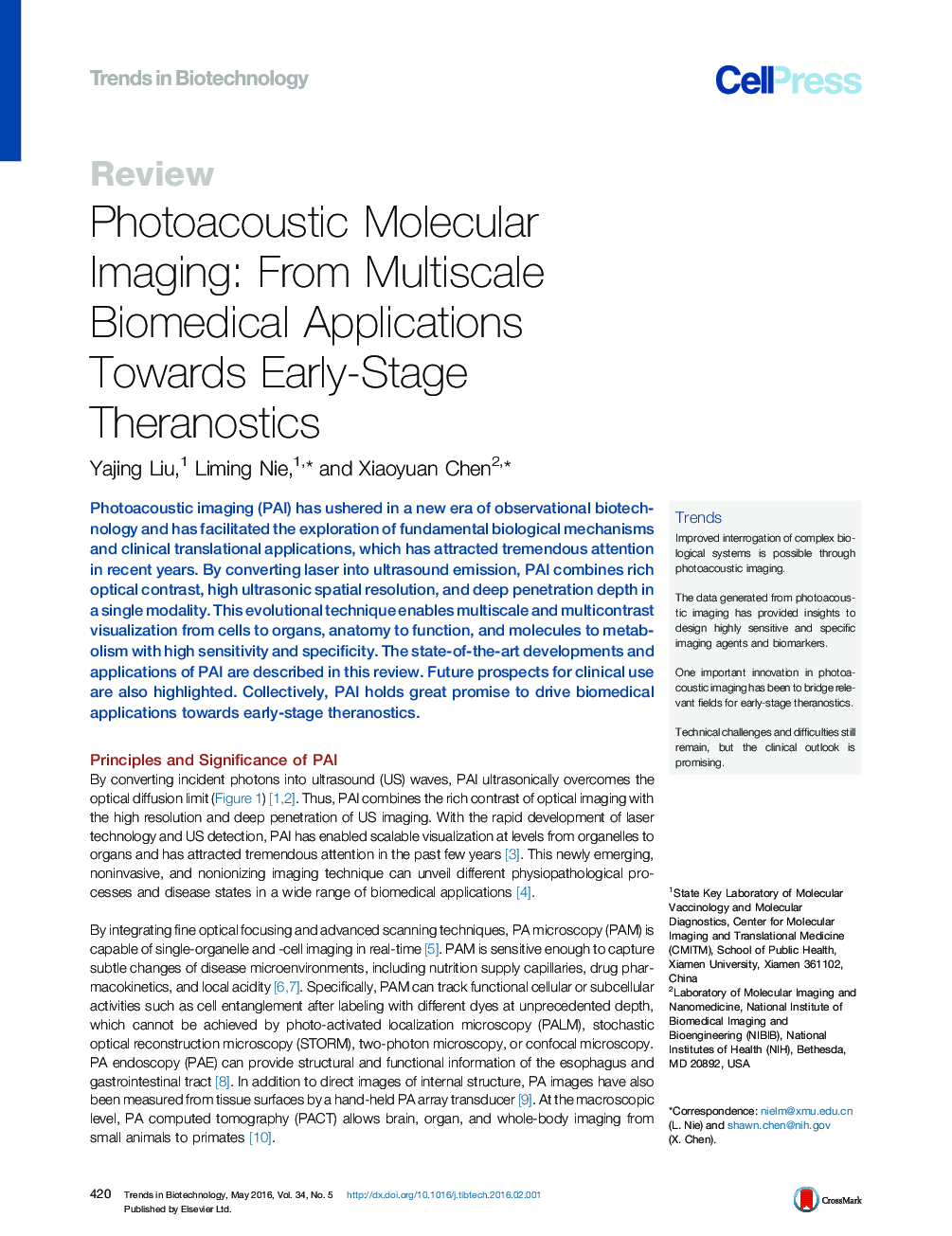| Article ID | Journal | Published Year | Pages | File Type |
|---|---|---|---|---|
| 36866 | Trends in Biotechnology | 2016 | 14 Pages |
Photoacoustic imaging (PAI) has ushered in a new era of observational biotechnology and has facilitated the exploration of fundamental biological mechanisms and clinical translational applications, which has attracted tremendous attention in recent years. By converting laser into ultrasound emission, PAI combines rich optical contrast, high ultrasonic spatial resolution, and deep penetration depth in a single modality. This evolutional technique enables multiscale and multicontrast visualization from cells to organs, anatomy to function, and molecules to metabolism with high sensitivity and specificity. The state-of-the-art developments and applications of PAI are described in this review. Future prospects for clinical use are also highlighted. Collectively, PAI holds great promise to drive biomedical applications towards early-stage theranostics.
TrendsImproved interrogation of complex biological systems is possible through photoacoustic imaging.The data generated from photoacoustic imaging has provided insights to design highly sensitive and specific imaging agents and biomarkers.One important innovation in photoacoustic imaging has been to bridge relevant fields for early-stage theranostics.Technical challenges and difficulties still remain, but the clinical outlook is promising.
